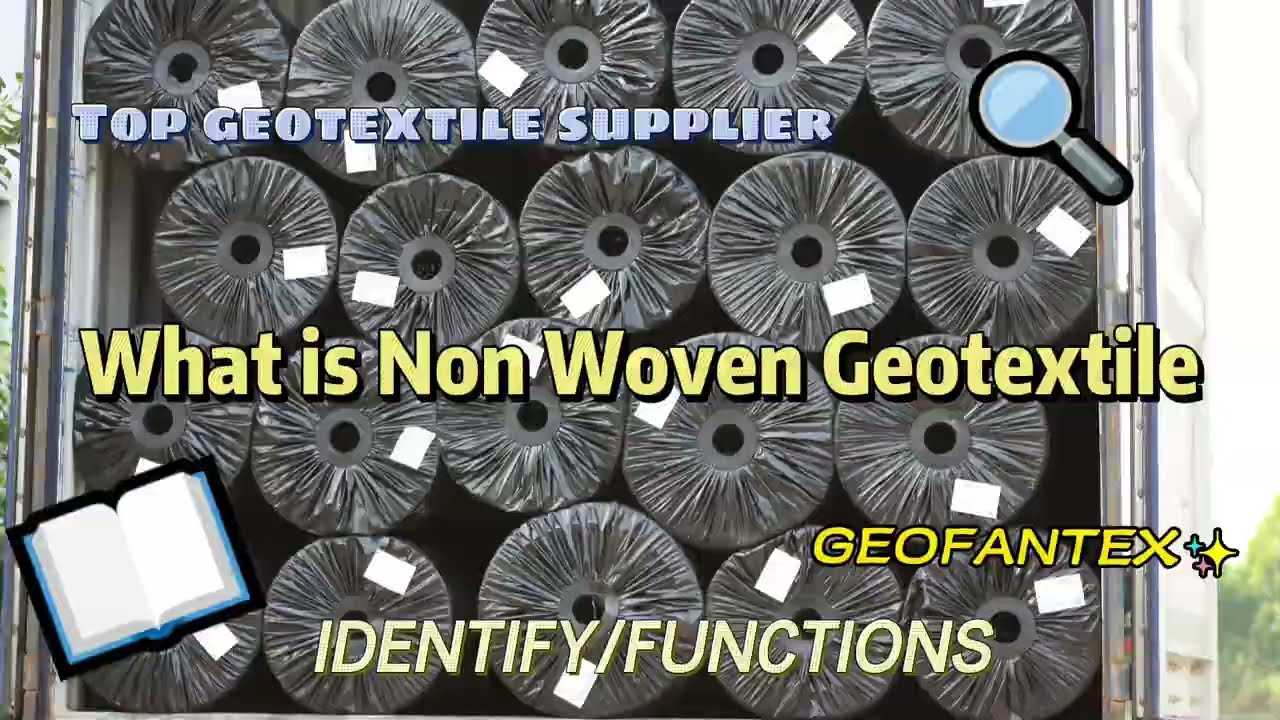What are some of the different ways geotextiles can be used? Used for a wide variety of purposes in the construction, drainage, and landscaping industries respectively.

The nonwoven geotextile fabric material used to make fabric can perform the function of a separation layer, thereby preventing the movement of fine particles. Designed for challenging types of soil that are typically considered to be unsuitable for use in the construction of roads or pavements.
The addition of polyester nonwoven geotextile fabric fabrics, which offer both additional strength and stability, can also be beneficial to the subsoil layers. The incidence of earth movement, cracking, and sinking can all be mitigated to some degree if a stable base is laid down first.
What different kinds of Geo Fabric are there for customers to select from?
Both woven and non-woven geotextiles are permeable; however, the use of non-woven geotextiles is recommended for applications that require drainage and filtration
This is due to the fact that non-woven geotextiles have a higher flow rate and a smaller EOS (opening for fines to pass)
Woven geotextiles also permit some water to pass through them despite their impermeable nature
What is the primary difference between materials that are woven and those that are non-woven? Woven geotextiles can be used as a tension membrane for the purpose of ground reinforcement because of their high strength and low elongation. This makes them an ideal material for this application. Their incredible strength makes this accomplishment achievable. Non-woven geotextiles have a higher elongation than woven geotextiles, but they can be more robust, which enables them to function as a separation layer beneath heavy rock fill. Woven geotextiles have a lower elongation than non-woven geotextiles.
Another factor that will be taken into account during the decision-making process is the level of permeability that the fabric possesses. Non-woven materials, which have an exceptionally high flow rate, are an excellent choice for use in granular or any other kind of soil that drains quickly.
The polyester or polypropylene that serves as the synthetic fabric of choice can be utilized in the production of either variety. The inherent resistance of polypropylene to the deteriorating effects of ultraviolet light is significantly higher than that of other plastics.
Woven geotextile, which has a high tensile strength, is an excellent choice for stabilizing the base course that lies beneath roads and pavements, as well as for reinforcing a variety of different types of difficult soil. This is due to the fact that woven geotextile is extremely durable.
Woven materials provide a number of benefits, one of which is excellent creep resistance. As a direct result of this, increased design strengths over the long term are accomplished.
A solution that is both practical and affordable for the use of reinforced soil in the following applications: embankments, slopes, projects involving stabilization, and the reinforcement of pavements and roads
In what kinds of situations is the use of non-woven geotextile appropriate?
Applications include things like the construction of roads and railways, as well as separation, drainage, protection, and filtration. Other examples of uses include these:In addition to being utilized frequently in parks and landfills, this material can also be found on batters and slopes, behind retaining walls, and in a number of other locations. The increased permeability of nonwoven fabrics, in comparison to that of woven fabrics, enables moisture to evaporate from the material at a more rapid rate.
In most cases, polyester is utilized during the manufacturing process of non-woven geotextiles.
Non-woven geotextiles use include: • Pavement stabilisation • Subgrade or subsoil separation • Slope stabilisation • Liner protection
The following are five typical uses for polyester nonwoven geotextile fabric materials:
recognizing and distinguishing between the various types of material
The use of geotextiles results in the formation of a barrier that separates various types of materials, such as soil and rock fill. This is accomplished by creating a barrier between the two types of material. Putting up a wall that is built to last for a significant amount of time. This is due to the fact that they guarantee that fine particles will not reduce the friction that exists within the rock pavement area. This causes the base layer to become more dense, which in turn has the effect of reinforcing it and making it more reliable.
Reinforcement
Because it provides additional support and stability, the addition of geotextile to steep slopes, retaining walls, and embankments all results in positive outcomes. The forces that would normally be transmitted into the ground are instead transferred to a layer of geotextile material.
Filtration They serve as a filtration layer, allowing water vapor to pass through at a rate that can be adjusted, but preventing the passage of liquid water.
The structure has the effect of slowing the flow of water while preventing soil and other small particles from moving through it. by utilizing the plane of the geo fabric, it is possible to achieve a wicking effect.
When Choosing a Geotextile for Road Applications, There Are Some Things to Take Into Consideration
There is a stringent set of requirements that must be adhered to in order to avoid getting in trouble with the authorities in charge of the roads in Australia.
adherence to the regulations governing the manufacturing process and the testing procedures.
When applied to the building of roads, the interactions that take place between the various types of soil, rock fill, and the nonwoven geotextile fabric material itself will produce a wide range of results.
It is essential to keep in mind that different site conditions require a variety of approaches to problem solving. This is something that must be kept in mind at all times. The ability to have a solid understanding of both the application being used and the geotechnical forces that are at play is essential for a successful installation. going all the way up to class E geotextiles, which are the most durable, from class A geotextiles, which are the least durable possible. In the majority of instances, the type of rock fill that will be utilized for a project will be specified, and this determination will be made on the basis of the size and quantity of the rock fill that will be used.
Different kinds of soil
However, in general, soils can be classified as either soft or firm depending on their consistency. When dealing with soils that are relatively soft, it is customarily necessary to use a geotextile that is both more robust and more substantial. This is done in order to ensure that the fill that is being placed on top will not puncture through. When loads are placed on top of a thinner geotextile, it typically works just fine for separation because the geotextile will not be stretching and moving as a result of the loads. Case in point: Case in point: Case in point: Case in pointIt will be necessary for the geotextile to have a thickness that is proportional to the size and weight of the rock in order to avoid having the geotextile become punctured. Rock fill sizes used for stabilizing pavement typically range from 20 millimeters to 150 millimeters in diameter, but their diameters can go as high as 400 millimeters.








